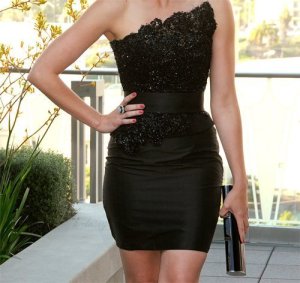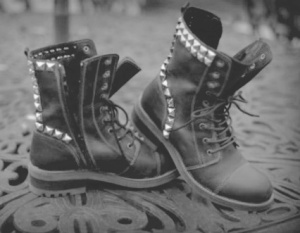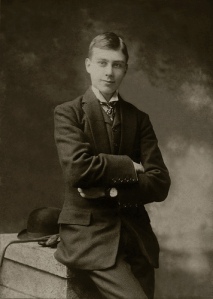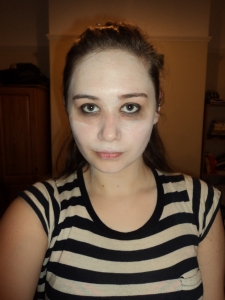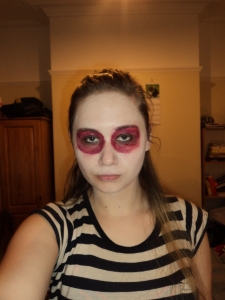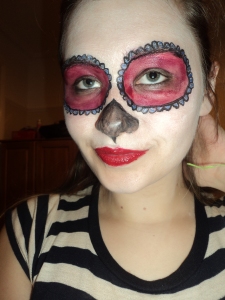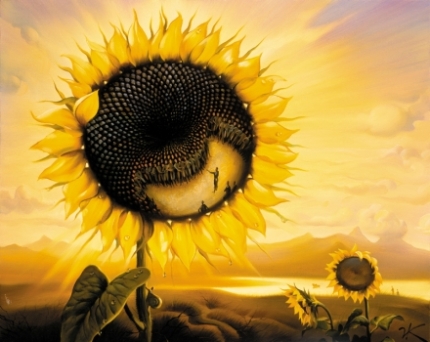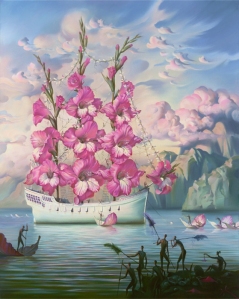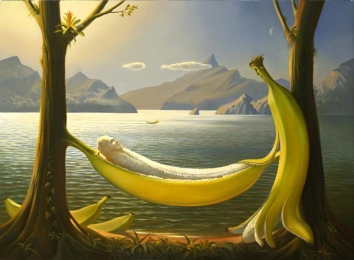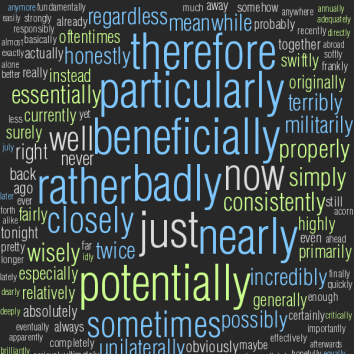
It has been too long since I last posted. I went home for the weekend, enjoyed the countryside but this doesn’t matter.
Music is today’s issue. Long journeys are best for music – by car, by foot, train, aeroplane. They zone out those horrible little munchkins that sit and scream on their mother’s knee. Spoilt brats. They stop the incessant beat of some hoodlum’s tasteless music. Besides all that, they give you an excuse not to have to talk to the last individual.
However, music is helpful for writing, too. I usually find I need silence when I’m first getting into the world I’m writing. I need to wander through their lives and this takes concentration, not beeping alarms and drunken warbles.
These things are, of course, all very useful for inspiration…just not the practicalities of getting started!
A lot of famous writers have admitted writing to music, too. So, what’s the allure?
Does the genre of music change the subject or tone of what you’re writing? Does it change the speed in which you write? Do the beats of the music naturally occur in the prose/poetry you produce?
This exercise should give you some answers to these questions and help you plan a soundtrack to your novel writing hours, should you want/need one.
I’ll try it first and analyse what I get. Here’s what you’ll need:
- A computer or notepad & pen.
- A stop clock: Timer (It’s free)
- Some videos/music from your mp3 player of choice.
I suggest you play the same songs/similar ones to me when first trying this to see if you get similar results but you are welcome to experiment.
The videos that I use (just below) have been placed on repeat. You can do this with youtube by going to the video you want and deleting the “uk.” or “au.” etc out of the URL bar before “youtube.com/”. Then change “youtube.com” to “youtuberepeat.com” and keep the rest of the URL the same.
Press enter and the song should be on repeat.
This allows each piece of writing to be effected by only one song.
Now, write without stopping (as far as it is possible to) and didn’t judge what you’ve written. No editing beyond spell check! Deal? Deal.
You can either time your writing or just write till you come to a natural end. I’m the latter kind of writer so have set no time limit.
This is what it inspired me to write:

The door slammed, a splash of water ruining her suede heels. She wiped her eyes, smearing the running eye liner, and blinked into the night. Prickles erected the hairs on her shoulders as water dotted her skin. Ignoring it, she checked the alleyway.
A cat was under the rubbish bin, its eyes flashes of colour reacting to every headlight, but she didn’t notice. she only saw the bin bag pyramid, the wet rankness that went hand in hand with damp cardboard and newly watered walls outside a waterhole.
Smiling, she hiked her tights, pulling a new hole into the smooth material, and took out her phone as she headed for the main street. It was an old thing: white scratches nicked the paintwork and the often bashed screen dulled its back-light with tiny trenches in the glass.
The clap of her heels was soon hidden by the screech of old breaks in double decker buses, the distant horn of an angry driver and the always present whir of a police car on patrol.
“Drop the phone.”
The words were cut by the metal at her neck. It was ungiving, maybe a thumb’s width at most. But, he had a posh accent. He spoke proper. She thought she could reason with him.
“Sorry honey, do I-”
“Don’t turn around.”
She stilled her neck, bit her lip and dropped the phone from her hand. It crashed to the floor, the last straw in their abusive relationship, and split into parts.

This took me around 15 minutes. (Sorry, I forgot to time it). Obviously, there will be some problems with it as it’s a first draft and unedited. That’s normal. What I will try to work out is if there are any simularities to the music.
For one, I had it rain in the scene. This is intrinsic to the song. I also seemed to have played off the beginning of the video and the images of 90s clubs that the video showed. I went for a young woman around the age of Shirley Manson when she sang the song and the melancholy feel to the track played out in the dangerous swing at the end of this section of prose. It also shows itself through how unaware the girl is, caught up in her good night out.
The echoing feel of the music could also have played into the auditory sounds in the story; the clap of her heels, the splash of the water, the screeches and whirs of the street. It has brought more than just the sense of sight to the story.
It took about 5/6 playthroughs of the song to write this much but it didn’t bore me when I finished, I just found a natural break in the piece.
I’ll try this exercise again with what you will (hopefully) agree is a very different style of music. This time I’ll try my best to remember to time it!

I grabbed my shoes and ran out the door, bag over one shoulder. The bus was at the stop, the end of the road. One minute. I sprinted, the bash of the bag bruising my back. Damn thing. I gulped air and reached the bus door as the doors started to squeak The driver kept the door open, glaring. He’d have to deal. I nodded at him anyway, delivering my best good girl smile. His lips didn’t even move. Bad day or not, he was a jackass.
I moved down the bus, fingering the wire to my ipod around my neck. Most chairs were full. I could smell the nappy of a sleeping child. The mother stared out the window, eyes blinking with the break of the white stripes on the road. At least one person couldn’t taste the stench, then. Lucky cow.
A guy at the back was alone, reading the newspaper. The rustle was stupidly loud as I sat down. I looked over, to see what was so interesting. It looked financial. Boring. I covered my ears in music and zoned into my newest big thing: The Thumps. They had music right. It thumped, it moved, it sang. My feet bobbed on the chewing gum floor and added new black streak marks to its pattern. I liked to think of them as my feet’s sheet music. I’d be able to write it all down some day, after the classes, after I’d learnt all the moves.
the bus stopped and I jumped down, imagining a pirouette as I landed, absorbing the force of the fall. The great pillars of the contemporary dance academy posed above me. I forced my feet to a slow, decorous walk and tried to keep my face serene, serious.
It was a losing battle.
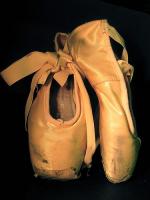 The inside was just as impressive. Wooden panelling reached half up the wall and above that leafy wallpaper spread to the painting ceiling. It was old world, grand. A bony lady, wrinkled and sat sideways in her seat, watched me carefully. She saw that my outfit was wash-bobbled, that the shoes wrapped around my wrist were scuffed threadbare. Well, fuck her.
The inside was just as impressive. Wooden panelling reached half up the wall and above that leafy wallpaper spread to the painting ceiling. It was old world, grand. A bony lady, wrinkled and sat sideways in her seat, watched me carefully. She saw that my outfit was wash-bobbled, that the shoes wrapped around my wrist were scuffed threadbare. Well, fuck her.
“Sara Wilbury. I’m here for the six o’clock session?”
The grey haired matron checked her lists and grimaced when she found my name, checking it off; she couldn’t send me away, after all. Ha!
“Second door on the left. Be good.”
I snorted. I am and that’s her problem. You have to be good to get in here and this is not going to be the last she sees of me.
“See you again tomorrow, lady.”
I said the last with just the right spice of sarcasm and slipped through the floor to ceiling brass-knobbed doors. My first day. Here it is!

This took me 14 minutes and 16 seconds to write or 5 playthroughs. Again, there are mistakes. There are places where paragraphs need to be split or description added etcetera but it has the bare bones of a beginning.
The song actually really helped me for this one. The fast paced beat to the track helped me get into the mind of an energetic teenager who’s as excited and passionate about their day as a four year old on their first day of school. The prose therefore reads fast, almost as stream of consciousness.
The class issues it speaks about are probably what helped me create the conflict with the public and the secretary too.
So, give it a go. Maybe music can create ideas where you didn’t have any. As I can tell you honestly, I had no story ideas in my head at all until I started writing to these tracks. Give it a go! It doesn’t take long, promise.
You might even find something you like and want to expand.
Even if you don’t, perhaps this exercise helped in other ways. It’s possible it has taught you what works and what doesn’t. For instance, on a slow writing day a fast paced song might help you punch out those words or a particular theme of music might help for a certain genre of writing. Experiment with it and find what fits.
***The pictures in this post are all picture I’ve found after doing the exercises to give you something to go with the story, for the more visually inspired. ***
As usual, I still have a twitter.
If you want to contact me in general though, feel free to comment or message me either here or there.
In case you’re interested, my next post will be about characterisation.



















